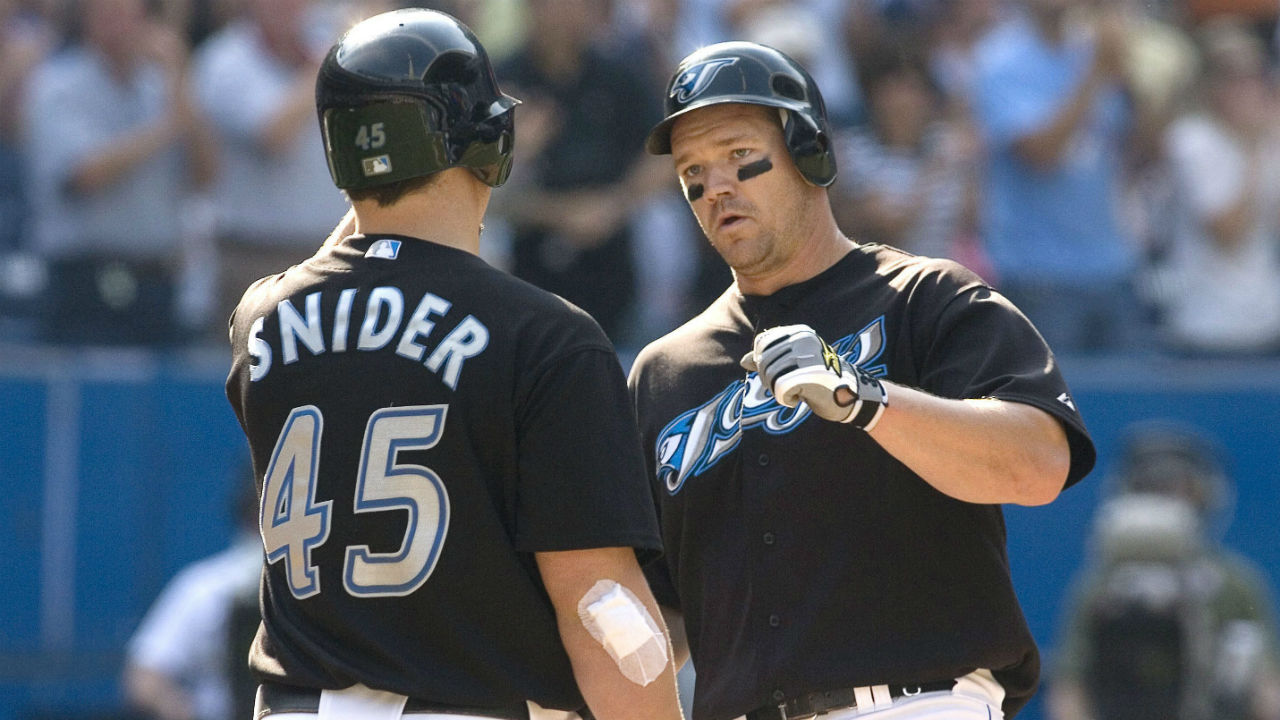If the 2019 Toronto Blue Jays can somehow defy the experts — and most pre-season projected win totals — and contend for a playoff spot, they’re probably going to need an extraordinary dose of Lady Luck on their side.
Heck, Fangraphs is projecting the team to win just 76 games. A year ago, it took the Oakland Athletics 97 wins to earn the second AL wild-card spot, so that should give you a sense of what the 2019 Blue Jays are up against, and the amount of good fortune they’ll need if they hope to wildly surpass expectations.
But that begs a question: what are the luckiest — and unluckiest — teams in Blue Jays franchise history?
A small bit of initial digging led to a deep Baseball Reference rabbit hole and some surprising findings.
A quick warning: If you’re the type who prefers to deal in absolutes, then this might not be for you (unless of course you enjoy a good hate read). Another warning: For fans of the World Series teams, some of these findings might elicit similar feelings to the day you “found out” about Santa Claus.
But if you’re the sort who appreciates the value of run differential in baseball, the role fortune can play over the course of a 162-game schedule, and/or you’re a Blue Jays fan willing to embrace some fun hypotheticals on the eve of what will likely be a long and trying season, then keep scrolling.
[snippet id=3305549]
This exercise began back in December after Jonah Keri wrote this column on former Blue Jay Fred McGriff. In addition to analyzing McGriff’s Hall of Fame bona fides, Keri offered an intriguing idea that McGriff might not only be one of the greatest hitters in Blue Jays history, but perhaps of the unluckiest as well given one of the teams he played on.
According to Baseball Reference’s pythagorean win-loss, the +106 run differential posted by McGriff’s 86-win 1990 Blue Jays suggests they actually performed at the level of a 92-win team. As for the 1990 AL East champion, Boston Red Sox? Baseball Reference says their +35 run differential should have produced 85, not 88 wins, suggesting the Blue Jays, not Boston, were the best team in the division that year. And by four games at that.
[sidebar]
To be sure, ultimate success is and always should be measured in actual wins and losses on the field. But that doesn’t mean pythagorean win-loss isn’t a valuable statistic with real applications.
For example: on July 28, 2015 the Blue Jays were 50-51 despite owning the best run differential in the Majors at +94. A big reason why was the team’s 10-21 record in one-run games.
That night, Anthopoulos made his first “all-in” move prior to the July 31 trade deadline and acquired Gold Glove shortstop Troy Tulowitzki from Colorado, in part to shore up some defence the team felt was costing them in close games.
“With the run differential, we felt we were better than the won-loss at the time,” Anthopoulos would later explain to reporters. “Our record in one-run games was so extreme we felt there was an element of randomness there and that would equalize a little bit.”
Boy was he right. Following a 43-19 tear to end the season, the Blue Jays would finish the season 24 games over .500 at 93-69.
But as impressive as those 93 wins were, based on their MLB-best +221 run differential, Toronto’s 2015 pythagorean win-loss record is an eye-popping 102-60. To put that number into historical context, here’s the highest pythagorean win totals in Blue Jays franchise history, along with the difference between that and the team’s actual won-loss record.
Highest pythagorean win totals in Blue Jays franchise history:
| Year | Pythagorean W-L | Actual W-L | Difference |
|---|---|---|---|
| 2015* | 102 | 93 | +9 |
| 1987 | 100 | 96 | +4 |
| 1985* | 99 | 99 | even |
| 2008 | 93 | 86 | +7 |
| 1990 | 92 | 86 | +6 |
| 1992* | 91 | 96 | -5 |
| 1993* | 91 | 95 | -4 |
| 2016* | 91 | 89 | +2 |
| 1988 | 90 | 87 | +3 |
| 1989* | 90 | 89 | +1 |
(* indicates playoff team)
Those 2015 Blue Jays were indeed every bit the force you remember. You could even argue it was the best regular-season team in franchise history. But as you scrolled down the list above, I’m sure the pythagorean win totals for the 2008, 1992 and 1993 teams also gave you pause.
More on them in a bit.
Now take a look at the unluckiest teams in franchise history. In other words, the teams with the biggest difference between their pythagorean win-loss record and their actual win-loss record.
Unluckiest teams in Blue Jays franchise history:
| Year | Pythagorean W-L | Actual W-L | Difference |
|---|---|---|---|
| 2009 | 84 | 75 | -9 |
| 2015 | 102 | 93 | -9 |
| 2005 | 88 | 80 | -8 |
| 2008 | 93 | 86 | -7 |
| 1990 | 92 | 86 | -6 |
| 1977 | 58 | 54 | -4 |
| 1979 | 57 | 53 | -4 |
| 1987 | 100 | 96 | -4 |
| 1995 | 60 | 56 | -4 |
| 2004 | 71 | 67 | -4 |
| 2007 | 87 | 83 | -4 |
Surprised to find Randy Ruiz’s 2009 club atop the list? Me, too. But here’s someone who won’t be:
The 2009 club — managed by Cito Gaston and anchored on the mound by Roy Halladay — got off to a 27-14 start and found themselves atop the AL East by 3.5 games on May 18. But the following night they dropped a 2-1 decision to Tim Wakefield and the Boston Red Sox to kick-start an ugly nine-game losing streak that would knock them out of the division lead for good, eventually finishing 28 games behind the division-champion New York Yankees. Aiding the 2009 Jays’ +27 run differential — and their pythagorean win total — were a series of early-season blowout wins to the tunes of 12-5, 12-2, 14-0, 8-1 and 13-1.
The tales of the 2005 and 2008 clubs, meanwhile, are intriguing in their own rights.
You may recall the 2005 squad — led by John Gibbons in his first full season as manager — as a young and scrappy outfit. Halladay (185 ERA+ in 19 starts), Gustavo Chacin (120+ ERA in 203 innings) and Josh Towers (120 ERA+ in 208 innings) excelled on the mound, while Vernon Wells (28 home runs, 104 OPS+), Frank Catalanotto (115 OPS+) and Shea Hillenbrand (18 home runs, 108 OPS+) led the offence. They played a fair share of one-run games (47). Had they managed to squeak out a few more than 16 wins from those contests, and had they not blown 21 of their 56 save opportunities, not only might history look back on them more fondly — but who knows? — perhaps then general manager J.P. Ricciardi wouldn’t have pursued B.J. Ryan in free agency the following off-season. Just a thought.
As for the 2008 Blue Jays — well, this is where things get really interesting. In the late 2000s, the A.L. East — especially once the Tampa Bay Rays ascended — was by far the toughest division in baseball. As such, the Blue Jays’ 86 wins, albeit in a fourth-place showing that season, required some really good baseball.
Unfortunately — especially for Gibbons, who was fired after the team fell to 35-39 — good fortune was in short supply early in 2008 with the team saving its best baseball for a 32-22 finish in August and September.
But here’s why it’s high time to give the 2008 Blue Jays some serious retro respect.
How pythagorean win-loss says the 2008 AL East standings should have shaken out:
| Team | Pythagorean W-L | Actual W-L | Difference |
|---|---|---|---|
| Boston Red Sox | 95-67 | 96-67 | -1 |
| Toronto Blue Jays | 93-69 | 86-76 | +7 |
| Tampa Bay Rays | 92-70 | 97-65 | -5 |
| New York Yankees | 89-73 | 87-75 | +2 |
| Baltimore Orioles | 68-93 | 73-88 | -5 |
Not only were the Blue Jays’ 93 pythagorean wins the second most in the American League East in 2008 — they were the second-highest total in the entire American League. The Los Angeles Angels of Anaheim won the AL West in 2008 with a 100-62 mark. But pythagorean W-L says the Angels played more like an 88-win team.
The 2008 Rays, with one fewer pythagorean win than Toronto, played in that year’s World Series. Meanwhile, the 2008 Jays are simply remembered for the surprise return of Cito Gaston; the surprise release of Frank Thomas; Travis Snider’s promising September debut as a 20-year-old; and another Cy Young–calibre season (246 innings, nine (!) complete games and a league-best 1.053 WHIP) from Halladay that ended with Game 162.
But what that team should really be remembered for is as one of the best regular-season teams in franchise history. Only the 2015 (102), 1987 (100) and 1985 (99) teams had higher pythagorean win totals.
Now on to those 1992 and 1993 teams.
Luckiest teams in Blue Jays franchise history:
| Year | Actual W-L | Pythagorean W-L | Difference |
|---|---|---|---|
| 2000 | 83 | 77 | -6 |
| 1992 | 96 | 91 | -5 |
| 1993 | 95 | 91 | -4 |
| 2017 | 76 | 72 | -4 |
| 2018 | 73 | 69 | -4 |
| 1991 | 91 | 88 | -3 |
| 1998 | 88 | 85 | -3 |
Now, I have to admit: As someone who lived through the 1992 and 1993 seasons as a teenager glued to his television each night watching these teams, I was surprised to see them appear on this list.
But as they say, the stats don’t lie. And what the stats say about the 1992 Blue Jays is that they weren’t even the best team in their division, let alone Major League Baseball, during the regular season.
Despite winning the 1992 AL East by a comfortable four games over the Milwaukee Brewers, pythagorean win-loss says it was the Brewers who played like a 96-win team and that they should have won the division by five games over Toronto.
Let that one sink in.
The 1993 Blue Jays’ 91 pythagorean wins still would have been good enough to win the East by four games over the Yankees. But who knows? Had Lady Luck been more on Milwaukee’s side than it appeared to be on Toronto’s in 1992, perhaps Paul Molitor doesn’t leave the Brewers that winter for the Blue Jays and the franchise histories of both teams look very different today.
The good news for Blue Jays fans is that despite baseball’s on-going statistical revolution, there are no plans to start taking down pennants or re-writing any record books based upon pythagorean win-loss.
In the meantime, go ahead and pour one out for the 1990 and 2008 Toronto Blue Jays.









